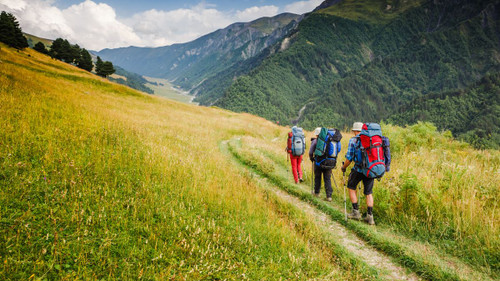Navigating Chafing Legs and Sticky Bodies: Hiking Through Forest Trails
Posted by Jack Miller on 27th Apr 2024
Embarking on a hiking adventure through lush forest trails promises an immersive experience with nature. However, the combination of chafing legs and sticky bodies can detract from the enjoyment of the journey. In this blog post, we'll explore practical tips and strategies to tackle chafing legs and sticky bodies while hiking through forested terrain, ensuring you can fully embrace the beauty of the wilderness without discomfort.
Understanding Chafing Legs and Sticky Bodies
Hiking through forest trails often involves prolonged physical activity and exposure to humid conditions, leading to sweat accumulation and friction between skin surfaces or clothing. This friction can result in chafing, while the sticky sensation from sweat can make the hiking experience less enjoyable.
Strategies to Combat Chafing Legs and Sticky Bodies
Choose Moisture-Wicking Clothing
Opt for moisture-wicking, breathable fabrics that allow sweat to evaporate quickly, such as synthetic blends or merino wool. These materials help keep you dry and minimize friction, reducing the risk of chafing. Avoid cotton clothing, which retains moisture and can exacerbate friction.
Apply Anti-Chafing Products
Prior to your hike, apply anti-chafing creams, balms, or powders to areas prone to chafing, such as the inner thighs, underarms, or waistband. These chafing remedies create a protective barrier on the skin, reducing friction and preventing irritation. Reapply as needed during breaks to maintain effectiveness.
Stay Hydrated
Proper hydration is essential for regulating body temperature and minimizing sweat production. Drink plenty of water before, during, and after your hike to stay hydrated and replenish fluids lost through sweating. Dehydrated skin is more prone to chafing, so staying hydrated can help prevent discomfort.
Wear Compression Shorts or Anti Chafing Thigh Bands
Compression shorts or anti chafing thigh bands can provide additional support and stop friction between the thighs, minimizing the risk of chafing. These garments also help improve blood circulation and muscle recovery during long hikes through forest trails.
Take Breaks and Cool Off
If hiking in hot and humid conditions, take regular breaks to rest and cool off. Find shaded areas or natural water sources where you can take a brief dip or splash water on your face and body to refresh and rejuvenate. Cooling off helps reduce sweat and minimize the sticky sensation on your skin.
Pack Extra Clothing
Bring along spare clothing items, such as lightweight shirts, socks, and underwear, to change into during your hike if you become excessively sweaty or uncomfortable. Changing into dry clothing helps prevent chafing and keeps you feeling fresh and comfortable throughout your journey.
Practice Proper Skin Care
Maintain good skin hygiene by showering and drying off thoroughly after your hike. Use gentle cleansers to remove sweat, dirt, and debris from your skin, especially in areas prone to chafing. Moisturize with a lightweight, non-greasy lotion to keep your skin hydrated and nourished.
Hiking through forest trails offers a rejuvenating escape into nature, but dealing with chafing legs and sticky bodies can hinder the experience. By implementing these practical strategies, such as choosing moisture-wicking clothing, applying anti-chafing products, and staying hydrated, you can minimize discomfort and fully immerse yourself in the beauty of the wilderness. Embrace the challenge of the trail with confidence, knowing that you're equipped to conquer chafing legs and sticky bodies during your forest hiking adventures.

